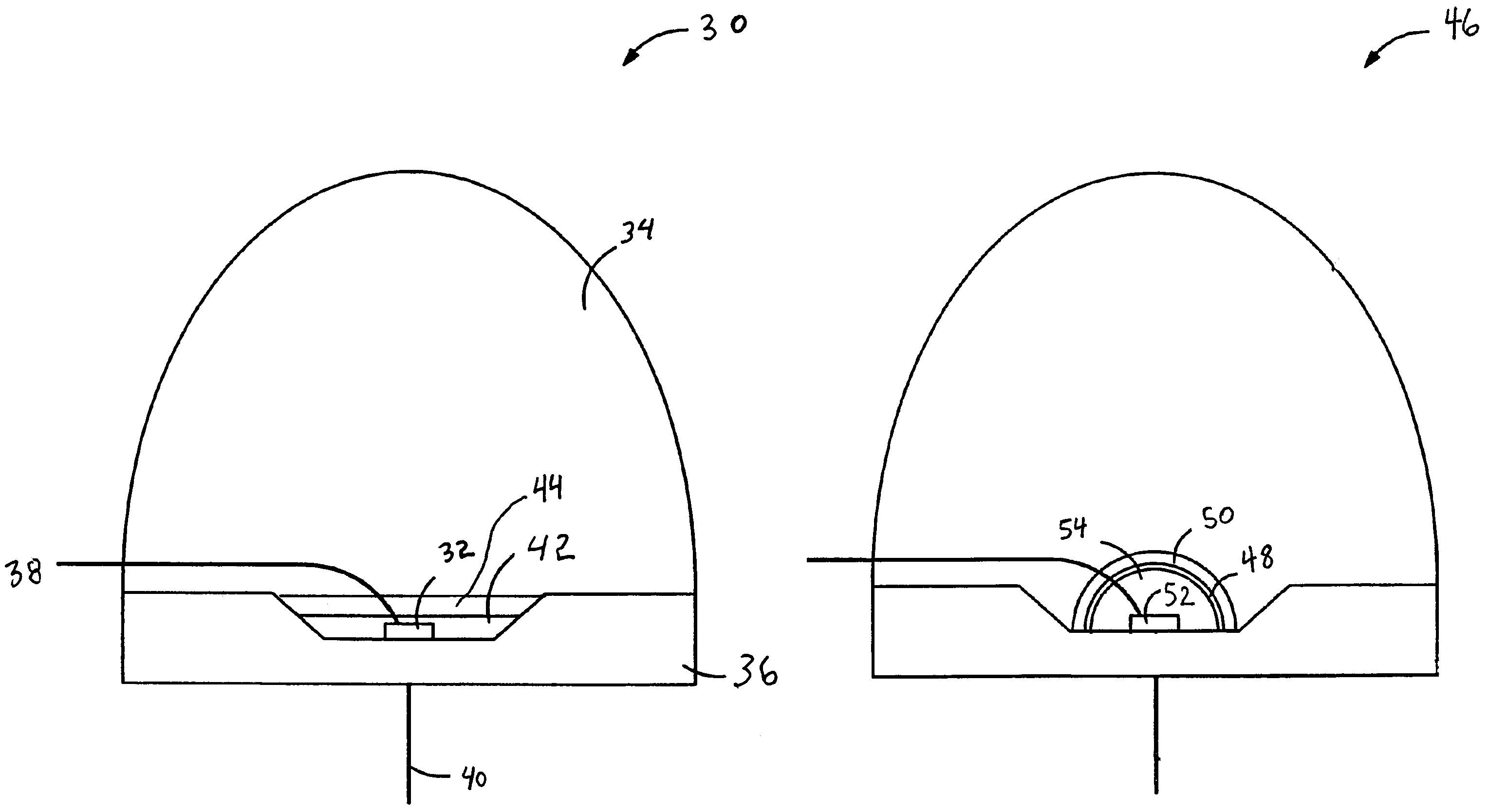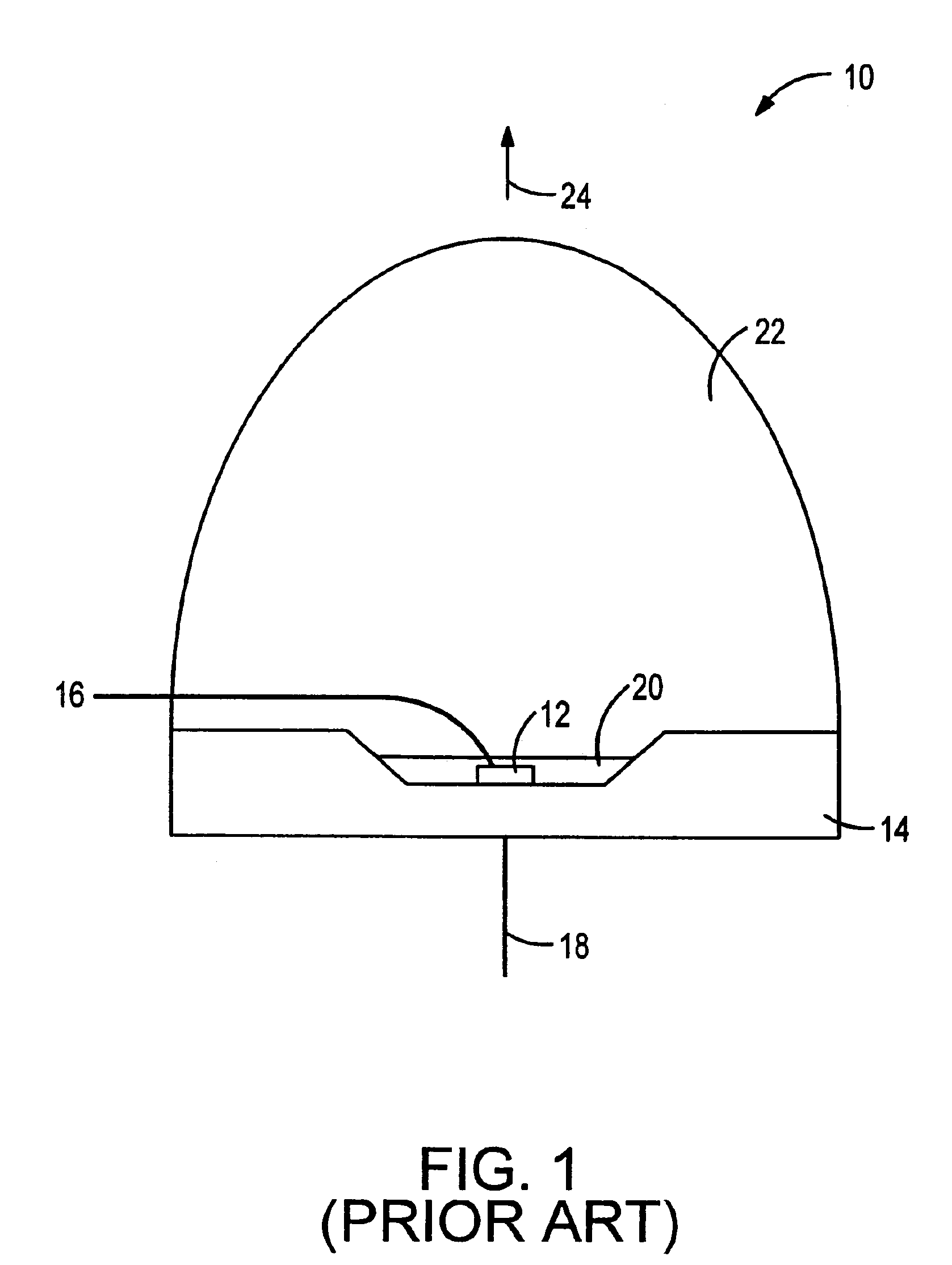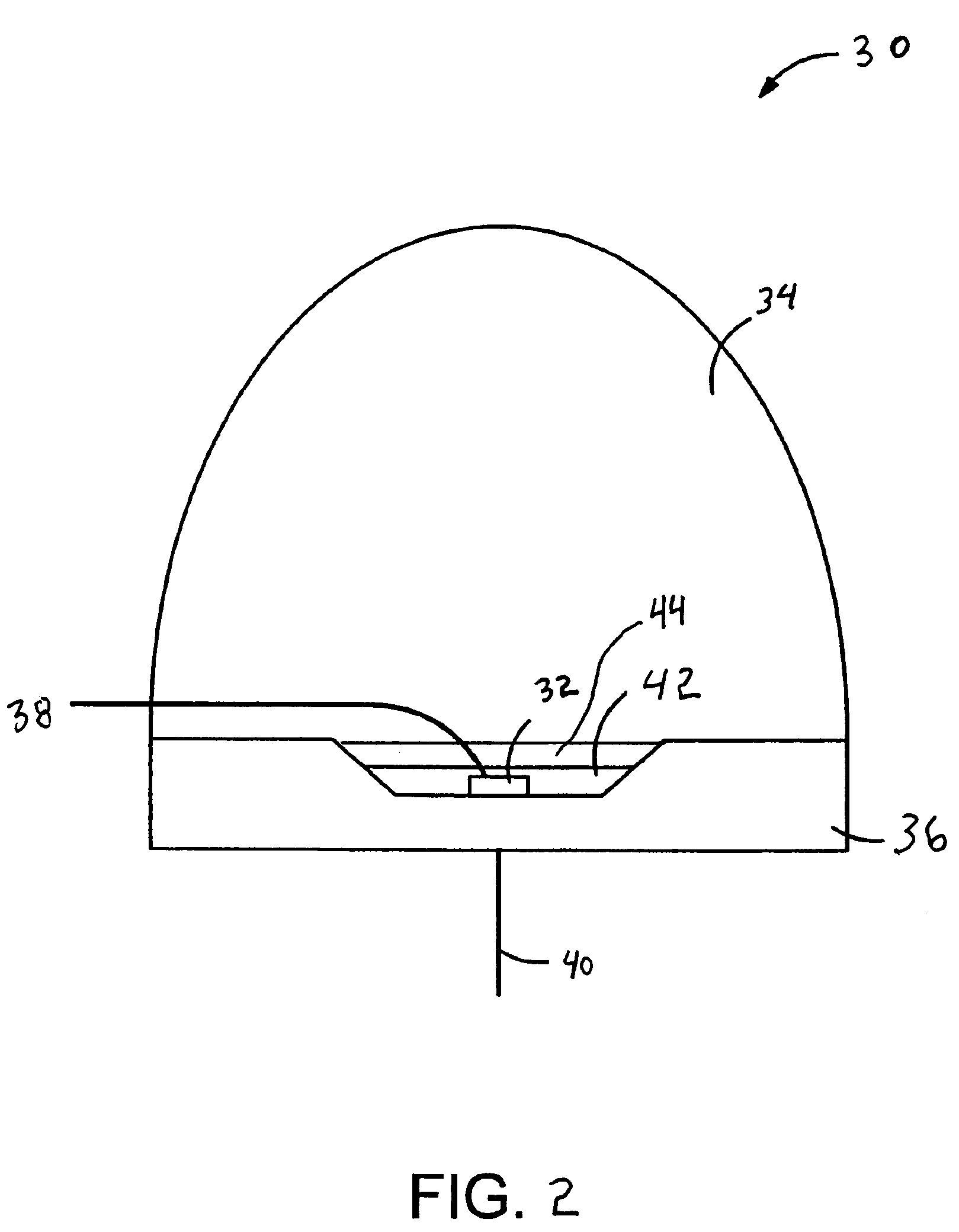LED illumination device with layered phosphor pattern
a technology of phosphor coating and illumination device, which is applied in the direction of discharge tube/lamp details, discharge tube luminescent screen, discharge tube/lamp details, etc., can solve the problems of significant radiation emitted from the die that bleeds through the phosphor coating, light bleed-through disturbs the lamp color, and the effect of reducing each of these problems
- Summary
- Abstract
- Description
- Claims
- Application Information
AI Technical Summary
Benefits of technology
Problems solved by technology
Method used
Image
Examples
Embodiment Construction
[0017]With reference to FIG. 1, an exemplary phosphor-conversion light emitting device or lamp 10 is shown. The light emitting device 10 comprises a semiconductor UV or blue radiation source, such as a light emitting diode (LED) chip or die 12 and leads 14 electrically attached to the LED chip. The leads 14 may comprise thin wires supported by a thicker lead frame(s) 16 or the leads may comprise self supported electrodes and the lead frame may be omitted. The leads 14 provide current to the LED chip 12 and thus cause the LED chip 12 to emit radiation. The die 12 is covered by a phosphor containing layer 20.
[0018]The phosphor containing layer 20 may contain a phosphor material and an encapsulant. The encapsulant is preferably an epoxy, plastic, low temperature glass, polymer, thermoplastic, thermoset material, resin or other type of LED encapsulating material as is known in the art. Optionally, the encapsulant is a spin-on glass or some other high index of refraction material. Prefer...
PUM
| Property | Measurement | Unit |
|---|---|---|
| mean particle size | aaaaa | aaaaa |
| luminescence decay time | aaaaa | aaaaa |
| luminescence decay time | aaaaa | aaaaa |
Abstract
Description
Claims
Application Information
 Login to View More
Login to View More - R&D
- Intellectual Property
- Life Sciences
- Materials
- Tech Scout
- Unparalleled Data Quality
- Higher Quality Content
- 60% Fewer Hallucinations
Browse by: Latest US Patents, China's latest patents, Technical Efficacy Thesaurus, Application Domain, Technology Topic, Popular Technical Reports.
© 2025 PatSnap. All rights reserved.Legal|Privacy policy|Modern Slavery Act Transparency Statement|Sitemap|About US| Contact US: help@patsnap.com



